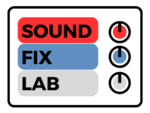There are several main types of reverb commonly used in audio production. Here are a few examples and their typical uses:
Hall Reverb
Emulates the sound of a large concert hall. It’s often used for creating a sense of spaciousness and depth, particularly for orchestral music or vocals.
Plate Reverb
Originally created using large metal plates, it produces a smooth and dense reverb tail. Plate reverb is versatile and can be used on various instruments and vocals, providing a warm and natural sound.
Room Reverb
Simulates the sound of a small or medium-sized room. It adds a sense of ambience without overwhelming the source material. Room reverb is commonly used in mixing to create a more intimate or natural sound.
Spring Reverb
Based on the mechanical springs used in vintage guitar amplifiers, it has a distinctive metallic tone. Spring reverb is often used in guitar recordings, giving a retro vibe and enhancing the instrument’s character.
Convolution Reverb
Uses impulse responses to recreate the acoustic properties of real spaces or hardware units. Convolution reverb allows for highly realistic and accurate recreations of specific environments, such as cathedrals, studios, or even classic reverb units.
These are just a few examples, and there are many other variations and hybrid types of reverb available. The choice of reverb depends on the desired effect, the characteristics of the source material, and the artistic intent of the producer or engineer.
Using reverb effectively in a mix, however, can greatly enhance the overall sound and create a sense of space. Here are some best practices for using reverb:
Create depth and dimension
Use reverb to place different instruments or elements within the mix. Apply varying amounts of reverb to different tracks, with more reverb on background or distant sounds, and less on prominent elements to maintain clarity and focus.
Consider the source material
Different instruments and vocals may require different types or amounts of reverb. Experiment with shorter, more subtle reverbs for dry vocals or close-miked instruments, and longer, more pronounced reverbs for spacious instruments or backgrounds.
Tailor the reverb to the genre and mood
Choose a reverb type that suits the style and character of the music. For example, a lush hall reverb may work well for orchestral compositions, while a shorter plate reverb could be fitting for pop or rock tracks. Consider the emotional impact you want to convey and adjust the reverb accordingly.
Use pre-delay
Pre-delay is the time between the direct sound and the onset of the reverb. Adjusting pre-delay can help create a sense of distance and separation. Shorter pre-delay times keep the reverb closely tied to the source, while longer pre-delay times create a sense of space and depth.
Pay attention to reverb decay time
Adjust the length of the reverb tail to complement the tempo and overall pace of the song. Shorter decay times work well for faster, more energetic tracks, while longer decay times can enhance slower, more atmospheric compositions.
Use automation
Consider automating the reverb settings throughout the song to add movement and dynamics. You can automate parameters like reverb send levels, decay time, or even the reverb type to create interesting transitions and effects.
Remember, the key is to experiment and trust your ears. There are no hard rules, and the best use of reverb will depend on the specific mix and artistic vision.





